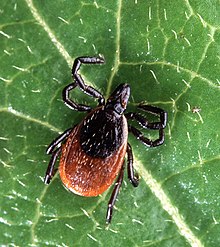Spring is a great time of year. Flowers and birds come out,
the days get longer, and the days get longer. Of course, there are some
unfortunate parts about spring as well, like pollen, caterpillar rain, and
ticks. We’ve briefly addressed ticks as disease vectors, but they can transmit
some nasty diseases, including one that has been making headlines recently.
Powassan virus is a recently discovered flavivirus. While Powassan has been
known since the early 2000’s, it is still thought of as an emerging infection
because the number of recorded fatalities associated with the virus has been on
the rise to 15 in 2013. The virus has a higher mortality rate than Lyme disease
(about 11%), and its symptoms can include vomiting, seizures, encephalitis, and
meningitis. About half of the people infected suffer from lasting neurological
symptoms.
There are no vaccines or antivirals for Powassan either. The
CDC says that the best way to avoid the virus are to reduce your exposure to
ticks: avoiding wooded or bushy areas, wearing long sleeves and pants if you do
go in a woody or bushed area, using bug repellent and checking your body for
ticks when you come inside.
Thankfully, the virus is still relatively rare. Most of the
cases have occurred in the Great Lakes regions of the US and Canada. However,
this year it has been found in Connecticut, Virginia. Unlike with Lyme disease,
a deer tick doesn’t need to be on your skin for very long to transmit the
disease, so be careful when you hike this spring!
--Joe

No comments:
Post a Comment